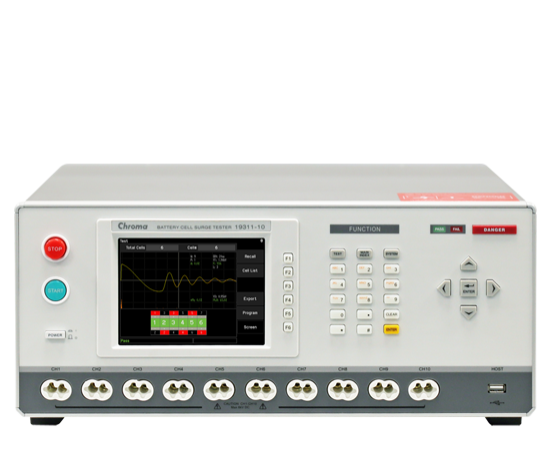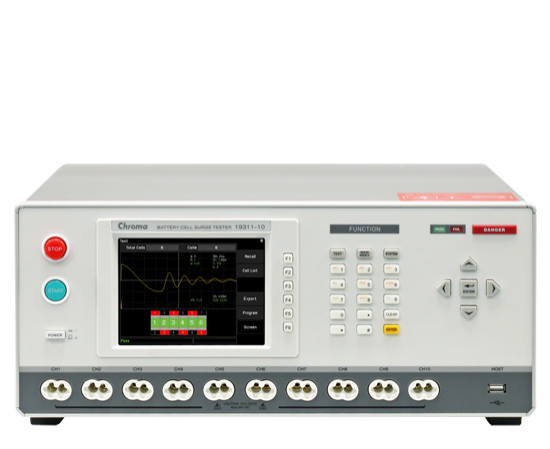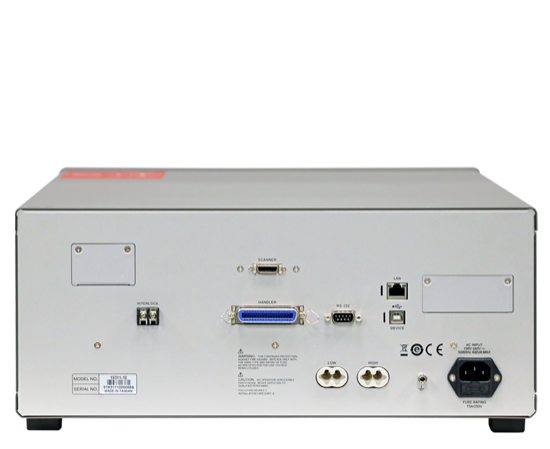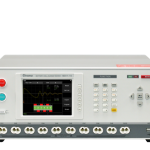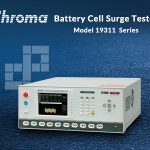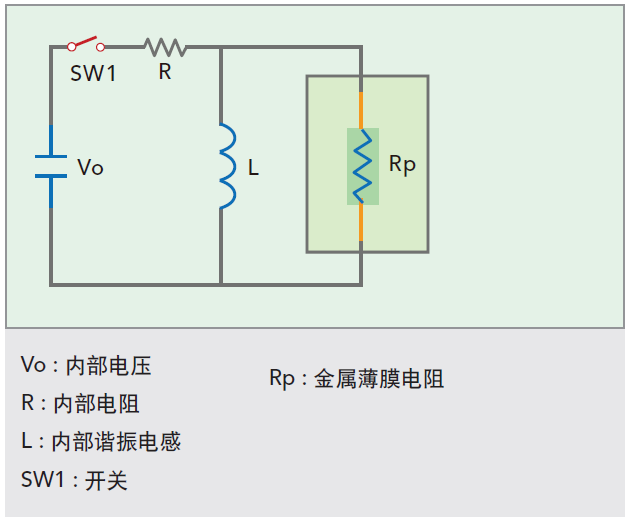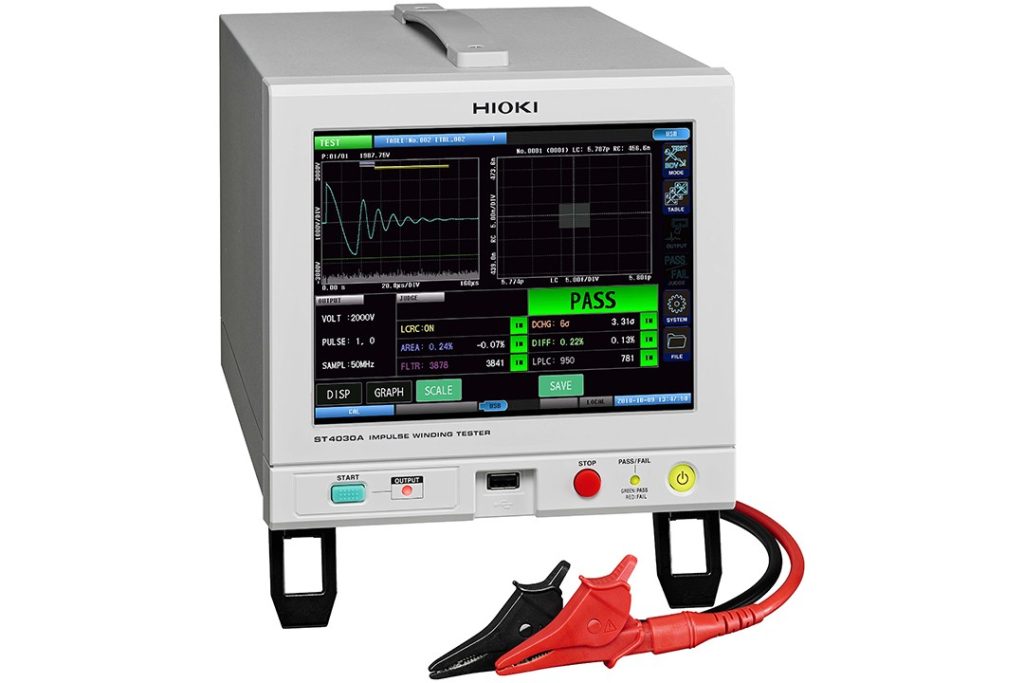Chroma 19311 series pulse testers can apply high voltage pulses to lead-acid battery cells that have not yet been filled with electrolyte to test the insulation quality between the positive and negative plates, as well as applying high voltage pulses to metal-film resistors to test the insulation quality of laser cuts and so on. With pulse output voltages up to 6kV, four-wire voltage measurement, and a high-speed sampling rate of 200MHz, the 19311 series can pulse test battery cells or metal film resistors, allowing users to choose between a single-channel tester (Model 19311) or a multi-channel scanning tester (Model 19311-10).
The 19311-10 model has 10 channels, and can utilize the scanning test method to do multi-channel switching output to test multiple battery cells, and can test up to 9 battery cells at a time. With the A190362 scanning fixture, it can support up to 25 channels and test 24 battery cells at a time. The advantage of rapid scanning test for multiple battery cells greatly saves testing time and labor costs, and is suitable for use in production lines to increase production capacity.
Before lead-acid batteries are filled with electrolyte, the main purpose of using high-voltage pulses to test the positive and negative plates of a lead-acid battery cell is to check the insulation distance and quality between the positive and negative plates, the existence of the isolation film, and whether there is a short-circuit between the positive and negative plates, in order to find out inferior or defective battery cells. The 19311 series analyzes the difference in insulation quality of the battery cells through the internal inductance and the high voltage shock attenuation of the battery cells.
The main purpose of using high voltage pulses to test metal film resistors is to detect the insulation distance and quality of the laser-cut grooves of metal film resistors, and to detect any potential short-circuit defects, so that inferior or defective products can be revealed. The 19311 series utilizes high voltage pulses to apply a brief, low energy high voltage to metal film resistors connected in parallel to detect defects in their internal insulation quality.
Therefore, pulse testing with the 19311 series improves the insulation quality of lead-acid battery cells, metal film resistors, etc., and ensures long-lasting reliability of the products.
Product Features
- Up to 6kV pulse test output (depending on the capacitance of the object to be tested)
- Programmable pulse interval 30ms~3000ms
- 8 adjudication:
- Area Comparison
- Comparison of area difference
- Flutter Detection
- quadratic differential detection
- First voltage peak
- Third voltage peak
- wave-to-peak ratio
- crest difference ratio
- Contact check (capacitive products)
- Crash voltage analysis mode (BDV Mode)
- High sampling rate (200MHz)
- Supports up to 25-channel scanning test (19311-10 with A190362 optional)
- English/Traditional/Simplified Chinese Interface
- Support for USB flash drives
- Waveforms, test conditions/results storage
- frame grabbing
- Memory data backup
- Graphic color display
- Standard LAN, USB, RS232 control interface
Application Areas
- lead-acid battery
- Metal Film Resistors (MELF, SMD/Chip)
| model number | relate (a story or information) |
| 19311 | Battery Cell Pulse Tester |
| 19311-10 | Cell Pulse Tester (10 channels) |
| A1903621 | 6CH 4-Wire High Voltage Scanning Fixture |
| A190364 | Double Cross High Voltage Banana Head + Flat Cutoff (1.5m) |
| A190365 | Double Cross High Voltage Banana Head + Flat Cutoff (3m) |
 Comprehensive test and measurement service provider-Shenzhen Weike Electronic Technology Co.
Comprehensive test and measurement service provider-Shenzhen Weike Electronic Technology Co.
